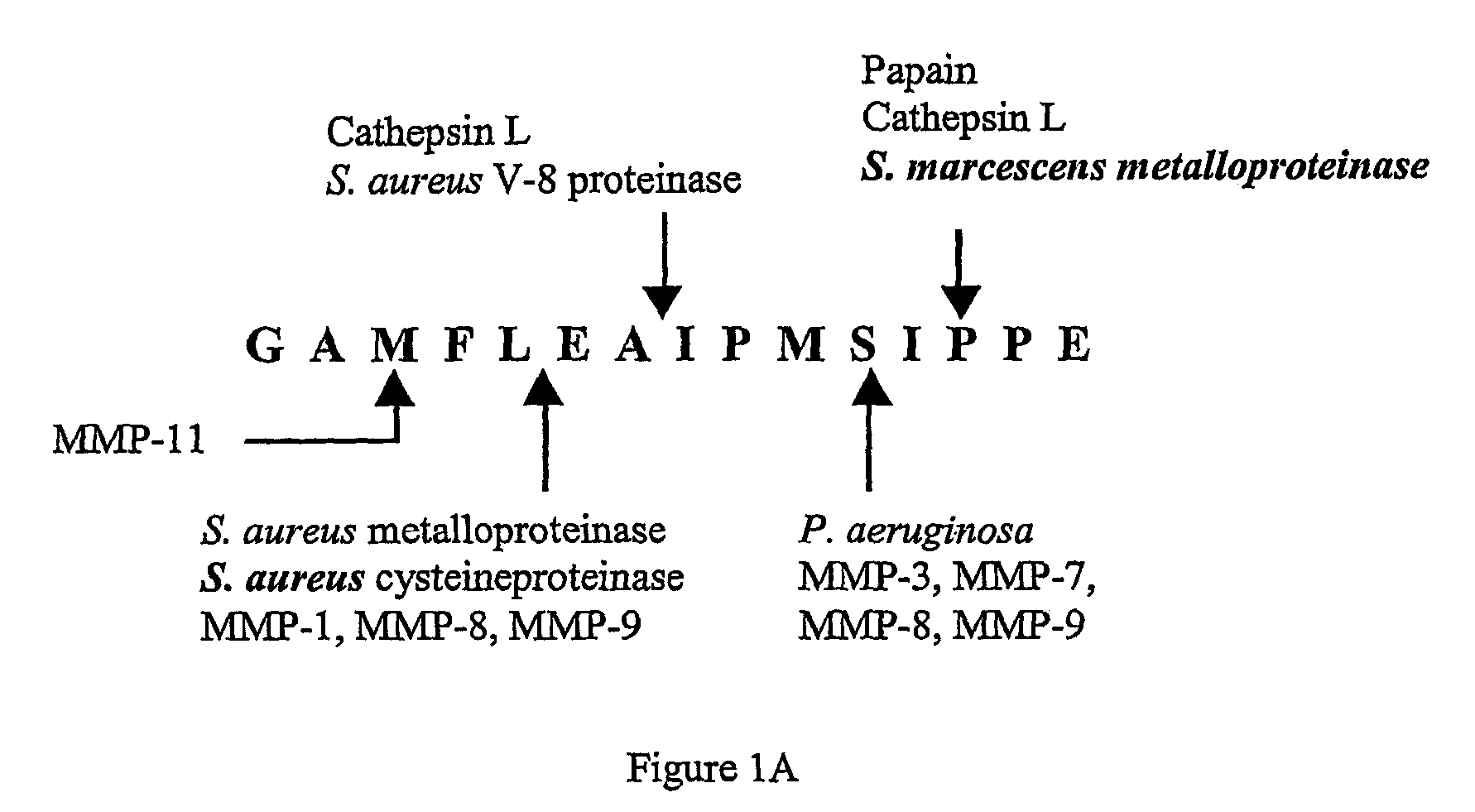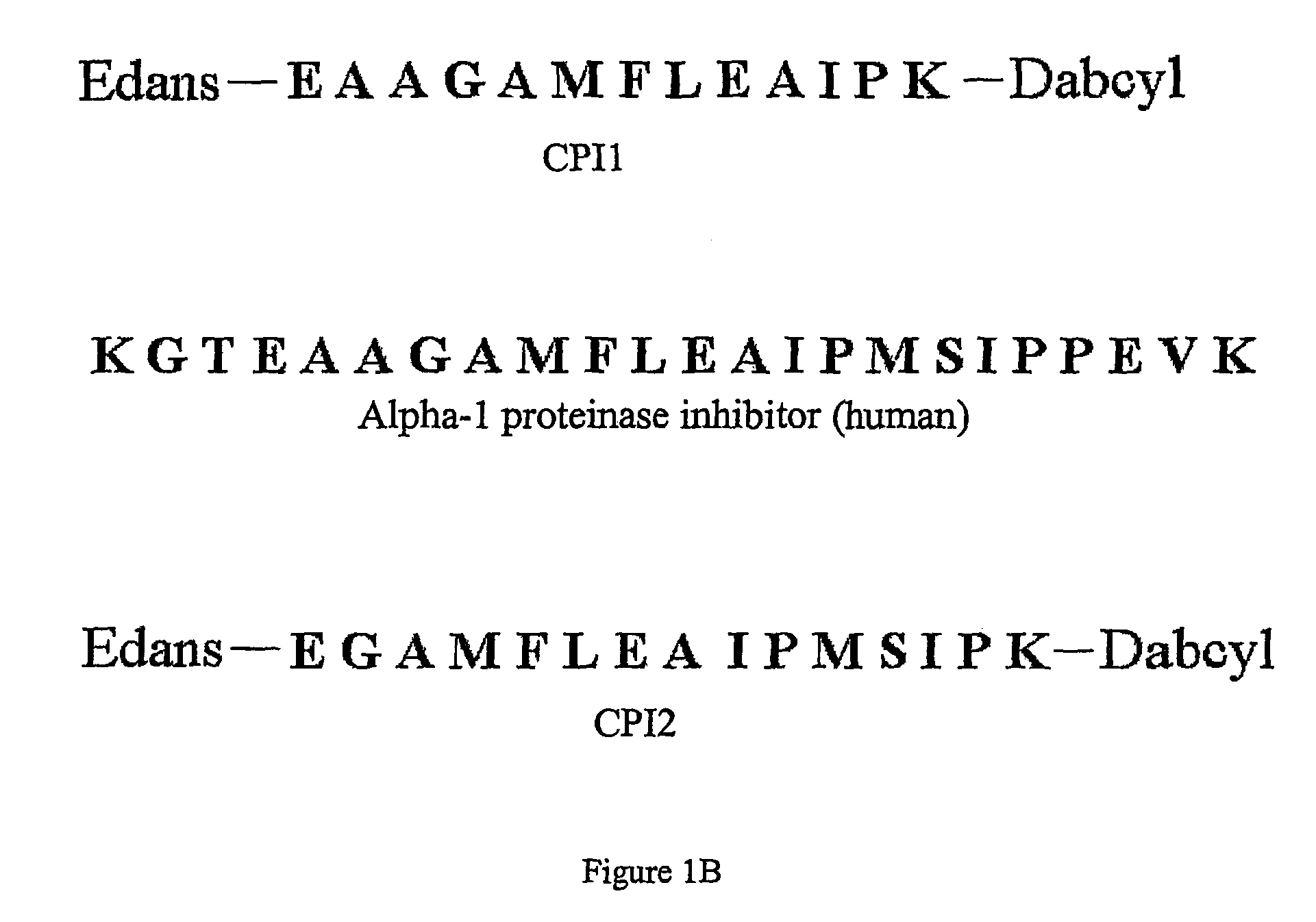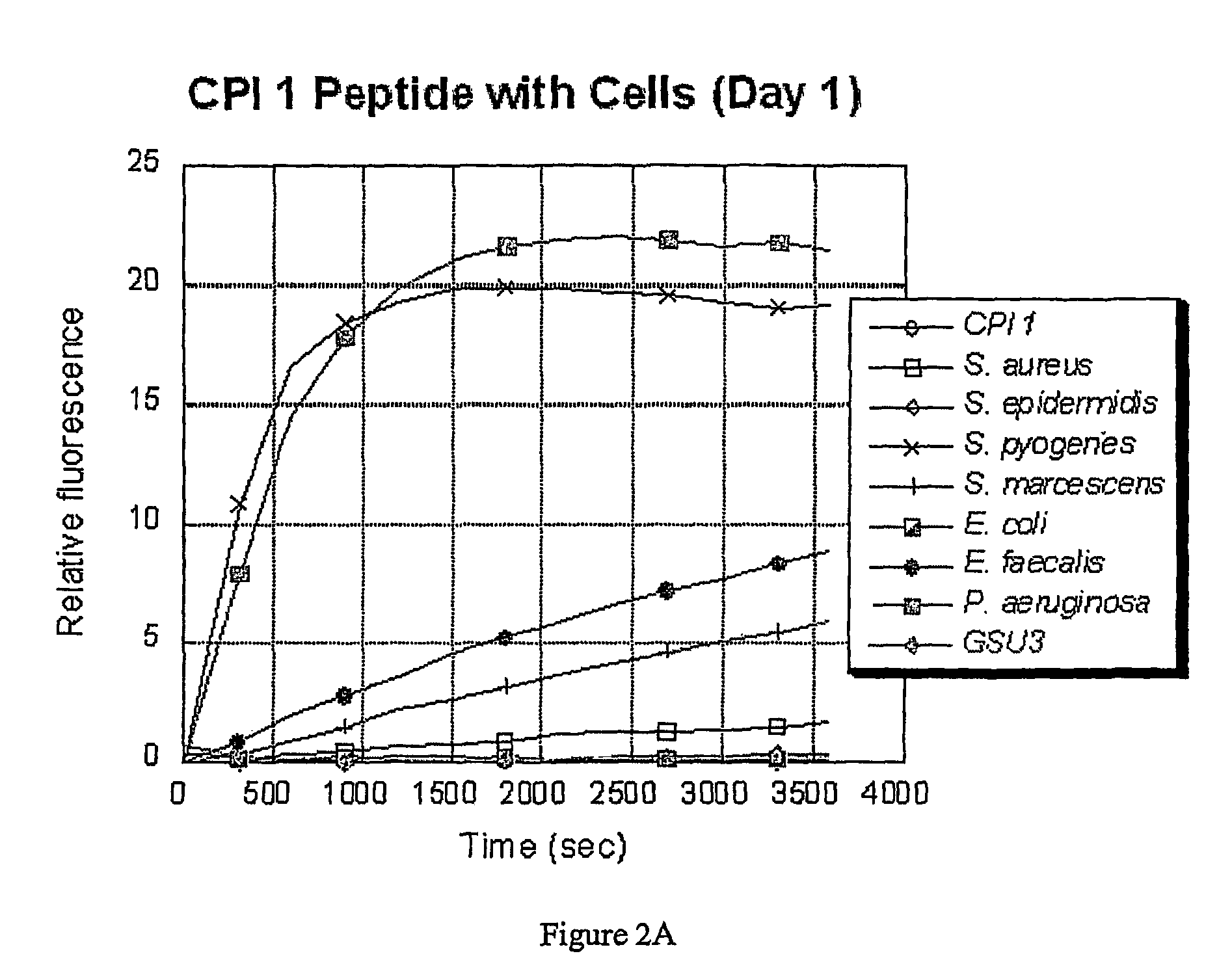Methods, peptides and biosensors useful for detecting a broad spectrum of bacteria
a technology of peptides and biosensors, applied in the field of methods, peptides and biosensors useful for detecting a broad spectrum of bacteria, can solve the problems of unintended effect of breeding resistant strains of bacteria, many symptoms only evident, and even life-threatening infections
- Summary
- Abstract
- Description
- Claims
- Application Information
AI Technical Summary
Benefits of technology
Problems solved by technology
Method used
Image
Examples
example 1
Preparation of Bacteria for Detection of the Absence or Presence of Bacteria in a Sample
[0065]A culture of each of the following bacterial species was grown overnight (O / N) in Brain Heart Infusion (BHI) broth at 37° C. with vigorous shaking (˜200 rpm), using methods that are standard in the art: Staphylococcus aureus; Streptococcus pyogenes; Serratia marcescens; Escherichia coli; Pseudomonas aeruginosa (PA14); Pseudomonas aeruginosa (GSU3); and Enterococcus faecalis. After overnight growth, a 1 ml sample of each culture was obtained, and the cells were removed from the culture supernatant by centrifugation at 12,000×g for 5 minutes. The remaining culture supernatants were stored on ice until required (less than one hour). The bacteria were assayed for the presence or absence of enzymes as described below.
[0066]Alternatively, the bacterial cells are not separated from the culture supernatant, but rather, the assay is carried out on a sample containing the cells still in suspension in...
example 2
Extraction of Bacteria from Wound Dressings for Determining the Absence or Presence of Bacteria in a Wound Sample
[0067]Thirty-five fresh, frozen wound dressings were obtained from Dr. Thomas Serena, medical director of the St. Vincent Wound Clinic, Erie, Pa., and founder of the Penn North Centers for Advanced Wound Care. The dressings were classified as medical waste for this study and no information on the wounds or the patients was obtained. The dressings were from random wounds and were collected and shipped on the same day. The dressings were shipped on dry ice and stored immediately at −80° C. upon arrival.
Extraction
[0068]On the day of analysis, the dressings were removed from the freezer and defrosted enough to stretch out the dressings for cutting. All work was done under sterile conditions and following the Blood-Borne Pathogen Guidelines. A wide variety of dressing sizes and exudates were represented. Most of the dressings were gauze-type with some including an absorbent ce...
example 3
Broad Spectrum Assay Using Variants of α1-PI RSL Sequence
[0071]Two peptide substrates, CPI1 and CPI2, were designed to encompass all of the cleavage sites of the RSL sequence, as shown in FIGS. 1A and 1B. The peptide substrates were labeled with the fluorescent probe edans (5-((2-aminoethyl)amino)naphthalene-1-sulfonic acid) and the quencher dye molecule dabcyl ((4-(4-(dimethylamino)phenyl)azo)benzoic acid).
[0072]
(CPI1)Edans-EAAGAMFLEAIPK-Dabcyl(SEQ ID NO: 1)(CPI2)Edans-EGAMFLEAIPMSIPK-Dabcyl(SEQ ID NO: 2)
[0073]The bacteria were grown in an incubator overnight at 37° C. in 5 mL BHI (Brain Heart Infusion) media. Each of the resulting cultures was split into two samples. One was used as a culture, and the other was spun down by centrifugation and the supernatant was collected. The assays were run in 20 mM tris buffer (pH 7.2) with 150 mM NaCl added (PBS). The cleavage reaction was carried out with 7 μL of culture or supernatant and 3 μL of peptide substrate (5 mg / mL in water / DMSO) in ...
PUM
| Property | Measurement | Unit |
|---|---|---|
| pH | aaaaa | aaaaa |
| with wavelength | aaaaa | aaaaa |
| with wavelength | aaaaa | aaaaa |
Abstract
Description
Claims
Application Information
 Login to View More
Login to View More - R&D
- Intellectual Property
- Life Sciences
- Materials
- Tech Scout
- Unparalleled Data Quality
- Higher Quality Content
- 60% Fewer Hallucinations
Browse by: Latest US Patents, China's latest patents, Technical Efficacy Thesaurus, Application Domain, Technology Topic, Popular Technical Reports.
© 2025 PatSnap. All rights reserved.Legal|Privacy policy|Modern Slavery Act Transparency Statement|Sitemap|About US| Contact US: help@patsnap.com



